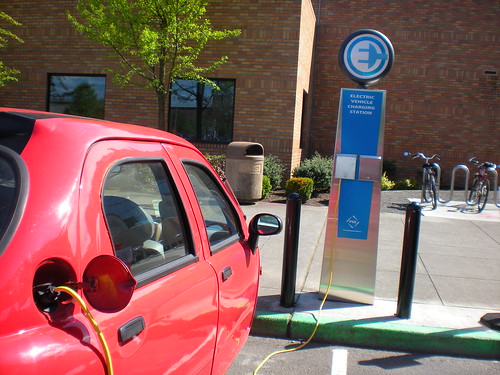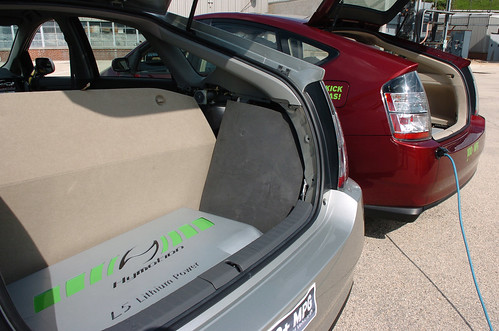FHWA Transportation and Climate Change Newsletter – June 2009
(Source: Office of Planning, Environment and Realty Federal Highway Administration)
Recent Events
Transportation Legislation Introduced. On June 18, Representative Oberstar introduced the Surface Transportation Authorization Act of 2009, which includes several provisions relating to climate change. The bill proposes to revise metropolitan and statewide planning statutes to require greenhouse gas reduction targets and strategies. DOT would not be able to certify the planning process of any MPO that fails to develop, submit or publish its emission reduction targets and strategies. Large urbanized areas would also be required to have a greenhouse gas emissions reduction performance measure. Additional information on the bill is available on the House Transportation and Infrastructure Committee website: http://transportation.house.gov/
House Passes Climate Change Legislation. On Friday, June 26, the House of Representatives passed the “American Clean Energy and Security Act of 2009,” a comprehensive climate change bill. The provisions of the bill, including a cap on greenhouse emissions, are intended to reduce overall greenhouse gas emission from major U.S. sources (which include transportation) by over 80% in 2050 compared to 2005 levels. The bill also mandates new energy-savings standards for buildings, appliances and industry; requires increased use of renewable energy sources by electric utilities; and provides funds to invest in new clean energy technologies and energy efficiency. Similar to the Surface Transportation Authorization Act of 2009 that was recently introduced by Representative Oberstar (see above), the climate change bill requires States and MPOs to develop greenhouse gas reduction targets and strategies for metropolitan and statewide transportation plans. The Senate is expected to take up the matter later this summer. For more information, go tohttp://energycommerce.house.gov/.
Global Climate Change Impacts in the United States Report Released.On June 16, The US Climate Research Program released a plain-language report on the science of climate change and the impacts of climate change on the U.S. The report includes a chapter on transportation which incorporates key messages and several regional spotlights. The report and accompanying factsheets on projected regional impacts are available here: http://www.globalchange.gov/publications/reports/scientific-assessments/us-impacts
DOT, HUD, and EPA Announce Partnership for Sustainable Communities. On June 16, DOT Secretary Ray LaHood, HUD Secretary Shaun Donovan, and EPA Administrator Lisa Jackson announced a new partnership to help American families in all communities — rural, suburban and urban – gain better access to affordable housing, more transportation options, and lower transportation costs. Earlier this year, HUD and DOT announced an agreement to implement joint housing and transportation initiatives. With EPA joining the partnership, the three agencies will work together to ensure that these housing and transportation goals are met while simultaneously protecting the environment, promoting equitable development, and helping to address the challenges of climate change. For more information on the partnership, see:http://www.dot.gov/affairs/2009/dot8009.htm
EPA Grants Available to Develop Local and Tribal Government “Climate Showcase Communities.”EPA has announced $10 million in grants available for local and tribal communities to establish and implement climate change initiatives, with awards ranging from $100,000 to $500,000. A 50% match is required from local governments. The Request for Applications will be available this summer. For more information, see: http://epa.gov/cleanenergy/energy-programs/state-and-local/showcase.html
CCAP Releases Two Climate Change Studies.The Center for Clean Air Policy recently released two new studies relating to transportation and climate change. Ask the Climate Question: Adapting to Climate Change in Urban Regions describes some of the adaptation measures that members of its Urban Leadership Adaptation Initiative have undertaken, including actions King County, WA is taking to make its transportation system more resilient. In Cost-Effective GHG Reductions through Smart Growth & Improved Transportation Choices, CCAP argues that smart growth measures can be cost-effective and profitable and calculate that comprehensive application of these policies could lead to substantial reductions of CO2 equivalent emissions by 2030.
State and Local News
EPA Grants Waiver to California. On June 30, 2009, EPA granted a waiver of Clean Air Act preemption to California for its greenhouse gas emission standards for motor vehicles beginning with the 2009 model year. California has committed that when a new national program comes into effect in 2012, automakers which show compliance with the national program will also be deemed in compliance with the State’s requirements. Now that California has been granted the waiver, other States will be allowed to enforce the same tailpipe standards. Thirteen other States and the District of Columbia have already moved to adopt the California standards, and a few others have indicated they may follow. For more information, go to http://www.epa.gov/otaq/climate/ca-waiver.htm.
Washington Governor Directs State Agencies to Lead on Climate Change. On May 21, Governor Christine Gregoire signed an executive order directing State agencies to take action on climate change. She directed the State DOT to estimate current and future statewide VMT, evaluate potential changes to state VMT benchmarks to address low and no emission vehicles, and develop strategies to reduce transportation emissions. She also directed the DOT to work with the State’s MPOs to develop and adopt transportation plans that will provide transportation choices, reduce GHG emissions, and achieve VMT benchmarks. The executive order is available at: http://www.governor.wa.gov/news/Executive_Order_09-05.pdf.
Reminders
2009 Transportation, Planning, Land Use and Air Quality Conference to focus on Climate Change. The conference, sponsored by the Transportation Research Board, FHWA, and others, will explore the latest research in the coordination of transportation, land use and air quality with a specific focus on climate change strategies. The conference will be held in Denver, CO July 28 and 29, 2009. For more information, see:http://www.ucs.iastate.edu/mnet/tpluaq/home.html.
Previous Newsletters
- May 2009
- April 2009
- March 2009
- February 2009
- January 2009
- December 2008
- November 2008
- October 2008
- September 2008
If you have any suggestions for inclusion in future issues of Transportation and Climate Change News, or if someone forwarded this newsletter to you and you would like to receive it directly in the future, please send your suggestions or request to Becky Lupes at Rebecca.Lupes@dot.gov.



